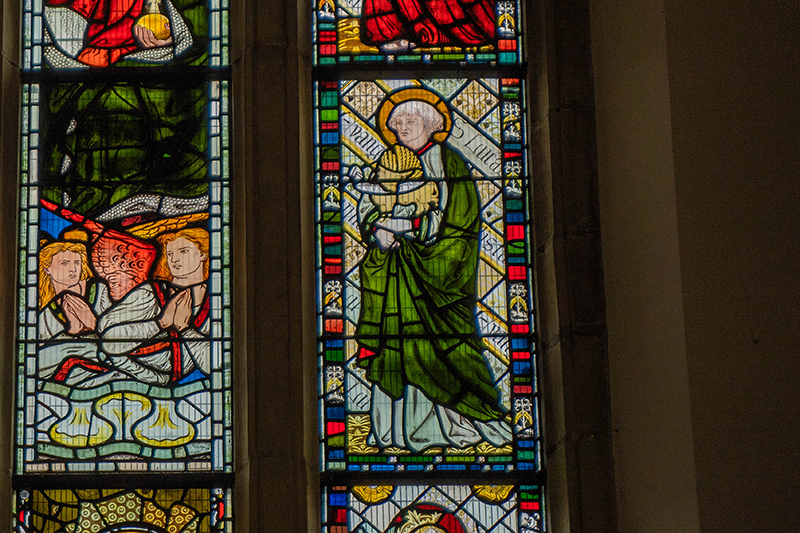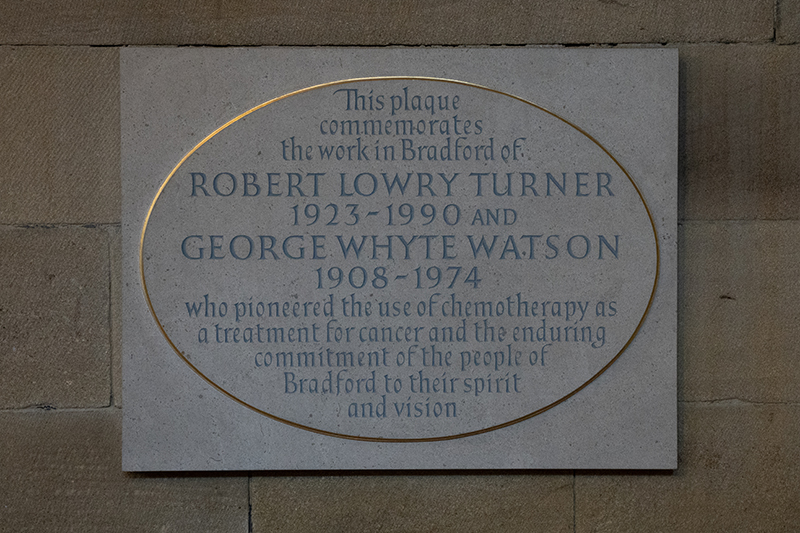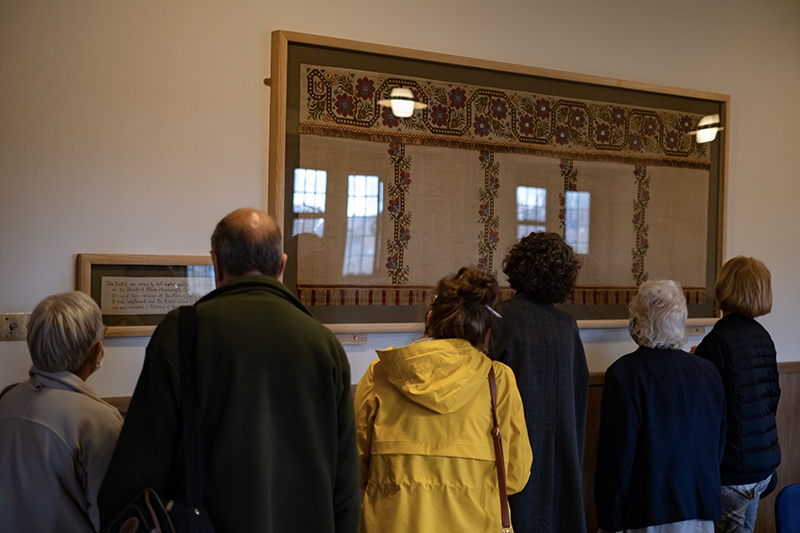The 5th July marks the birthday of the NHS (and NHS Social Care and Frontline Workers Day), and to mark the occasion here are some of the windows, monuments and items in the Cathedral that may be of interest when you visit!

Saint Luke
Luke may well have been a Syrian of Antioch, and he was referred to by Saint Paul as “the beloved physician”. He accompanied Paul on some of his journeys. As well as the Gospel of Luke, it is thought that he also wrote the Acts of the Apostles. He is the first recorded Christian physician and there are a number of hospitals named after him. His symbol is a winged ox and his day is 18th October.
In Bradford Cathedral, Saint Luke’s symbol can be found on the font and there is also a stained glass window by William Morris with an image of him holding a winged ox. This can be found at the east end of the Cathedral in the Lady Chapel.

Saint Elizabeth of Hungary
Elizabeth was born in 1207, the daughter of King Andrew II of Hungary. In 1221 she married the Landgrave of Thuringia, Louis IV, and enjoyed a happy life with him and their three children, until he died of plague and she was driven from the court. She became a Franciscan tertiary and continued her ministry to the sick and poor, whilst in poverty herself. She nursed in a hospital that she had herself endowed when she was queen. She cared personally for the sick, especially lepers. She died at the age of 24 and her day is 17th November. Like Saint Luke, there are a number of hospitals named after her.
In Bradford Cathedral, the stained glass window of Saint Elizabeth is on the South Ambulatory. The window depicts a legend which tells how, when stopped in the act of carrying bread to beggars, she opened her cloak and it was found to be filled with roses- not forbidden food.

Chemotherapy pioneers, Robert Lowry Turner and George Whyte-Watson
A plaque in Bradford Cathedral records the achievements in the development of chemotherapy in Bradford by Robert Lowry Turner and George Whyte-Watson. George Whyte-Watson was appointed consultant surgeon to St. Luke’s Hospital and Bradford Royal Infirmary in 1946; Robert Lowry Turner became Consultant Pathologist at Bradford Royal Infirmary in 1956. They are best known for their collaborative and pioneering work in the treatment of breast cancer after their research in the use of chemotherapy. A local research base for them was provided by the University of Bradford.

Louisa Pesel and the Bradford Khaki Handicrafts Club during World War One
Louisa Pesel (1870-1947) was born in Bradford, educated at Bradford Girls’ Grammar School and studied Design at the Royal College of Art in London. During the First World War she worked with Belgian refugees in Bradford and later formed the Bradford Khaki Club for shell-shocked soldiers, teaching embroidery as occupational therapy.
An example of the work of these soldiers is an altar frontal, originally made for use during worship in the Abram Peel Hospital Chapel and now part of the Bradford Cathedral collection, usually on display in the Chapterhouse.
